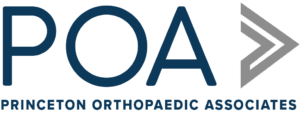
Physician Assistants
Physical & Occupational Therapists
KneeMRI ScansNon-OperativePhysiatry
Physical Therapy
Podiatry
Spine
Sports Medicine
TraumaUrgent Care
X-Ray Imaging

The labrum is a cartilage disk that serves as a critical stabilizer for the shoulder joint, reinforcing the ball-and-socket joint of your shoulder and serving as an attachment site for your ligaments and tendons. If you've ever dislocated your shoulder, then it's likely the result of a torn labrum. This can cause many long-term problems if not treated from relapsing over time.
While symptoms vary depending on the type of labral tear a person has, the most common signs of a torn shoulder labrum are:
The SLAP tear and Bankart tear are two of the most common types of labral injuries. While there are some key differences, both types of tears are usually accompanied by aching pain and difficulty performing regular shoulder movements.
SLAP stands for superior labrum from anterior to posterior. This type of tear occurs at the front of the shoulder, where the bicep attaches to your shoulder blade. Athletes who have a lot of strain with their arms over their heads and players involved in quick side-to-side motions are likely candidates for this injury. Patients who suffer from SLAP tears may experience pain when using their arms, especially when extending it behind them.
Bankart tears typically occur in younger patients who have previously dislocated their shoulder. When the shoulder joint ball slips out of the socket, the joint capsule is pulled on by the fibers surrounding and protecting the joint. This results in instability because more force can cause more damage, so the presence of a Bankart tear makes it easier for your shoulder to dislocate again. A dislocation where the head of your humerus shifts forward from its usual place is called anterior instability. A dislocation where it shifts backward is called posterior instability. Many patients with Bankart tears report feeling apprehension that the shoulder may slip out of place or dislocate when moved to specific positions.
Unfortunately, labral tears can be difficult to prevent. Most athletes who experience this injury are at risk due to the high force they go through their performance motions. This results in the tearing of their shoulder cartilage. However, we at Princeton Orthopaedic Associates are experts in labral tears and follow stringent protocols to ensure our patients are as prepared as they possibly can be to reduce and / or eliminate their chances of developing a labral tear during physical activity. Although an injury such as this is quite painful, 70% of people recover within six months after sustaining it, and 100% should be back to normal in a total period of 1 year or less!
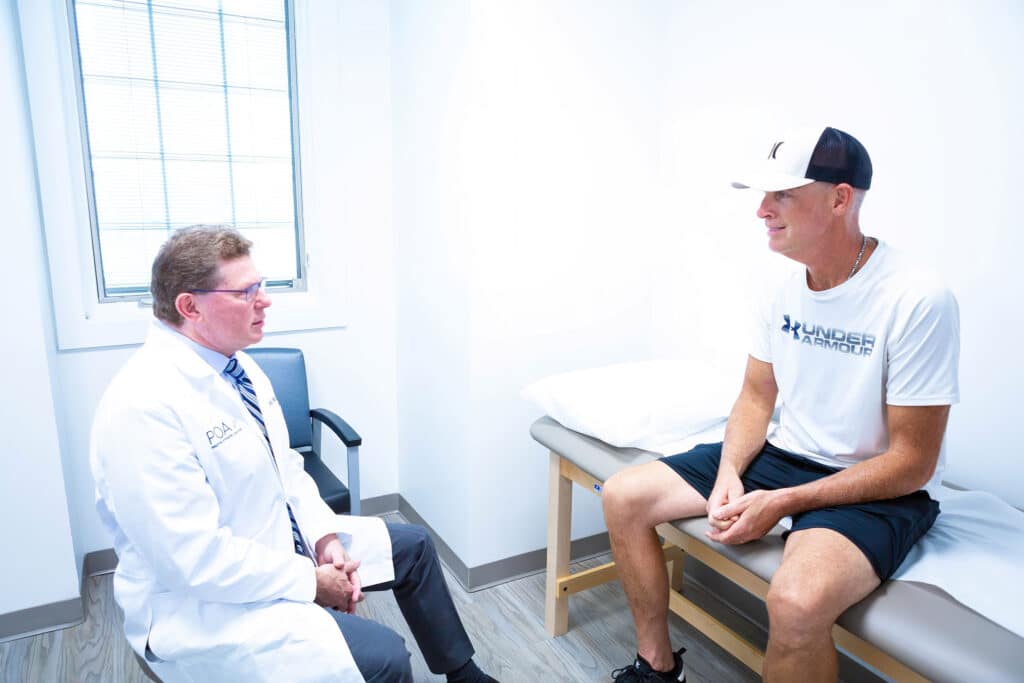
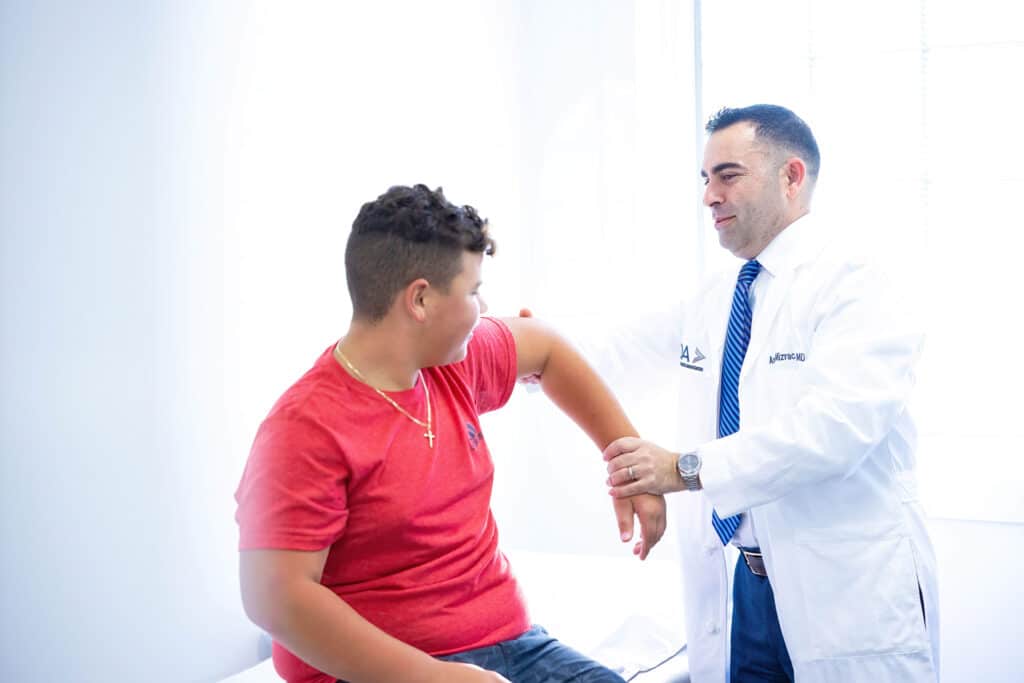
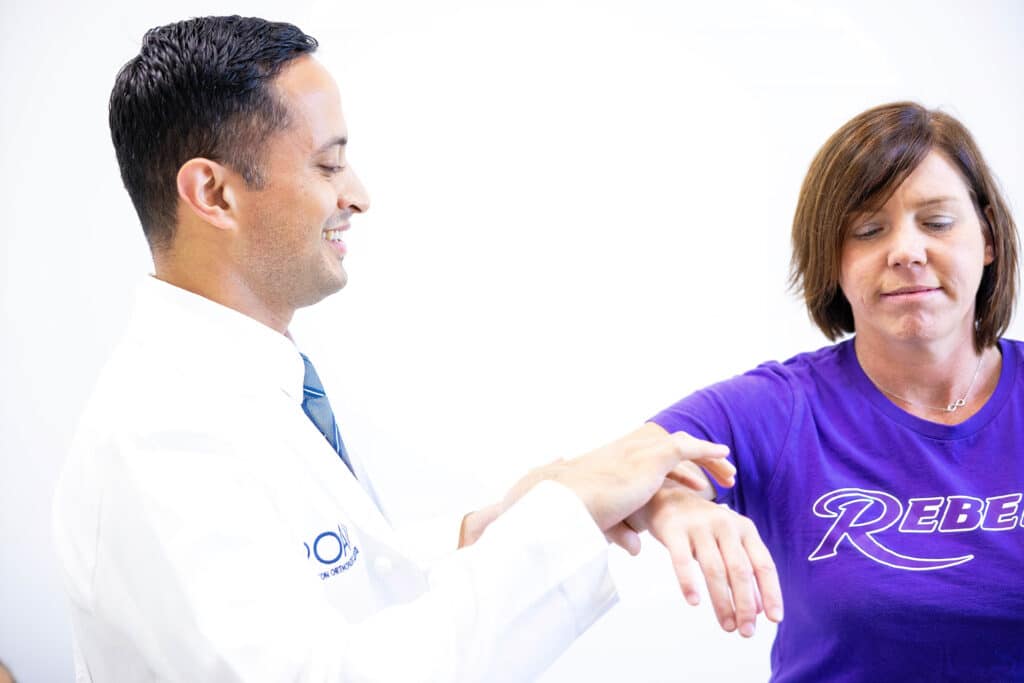
In some cases, the labrum can heal with rest and physical therapy. Physical therapy involves stretching and rehabilitation programs to help the shoulder regain its range of motion, strength, and endurance. Whenever possible, the surgeons at Princeton Orthopaedic Associates take a conservative approach to treating a torn shoulder labrum. Your surgeon will usually conduct a physical exam and order an MRI or X-ray imaging, if necessary, to determine the severity of the injury and appropriate treatment.
SLAP tears are most times treated through rest and the use of anti-inflammatory medications. An in-office cortisone injection may follow this to relax any excess tension keeping the two separated muscles from moving correctly against one another. Finally, after the shot is received, a physical therapist will assist you with gentle shoulder stretches within their clinic for between six weeks and two months to promote recovery.
If an injury like a Bankart tear with a dislocation has occurred, it is not ordinarily treated with surgery. In such instances, the physician helps by manipulating it back into its natural position - a process called reduction. Following this, we may put the patient through physical therapy to strengthen their rotator cuff and scapular stabilizing muscles.
The patient may require surgery if the tear worsens and does not improve with physical therapy. Suppose physical therapy fails, and the athlete still can't complete overhead motions, or dislocation continues to occur. In that case, the patient might require surgery to reattach torn ligaments and labrum using pins, plates, screws, or similar material. It is usually preferred but not always necessary if a smaller incision (2-5cm) is used because it's less invasive than major surgery.
Nonsurgical treatment has proven effective for patients with joint problems who do not regularly engage in physical activity. More athletic and physically active clients can expect less favorable results and may want to consider pursuing surgery after hearing from their doctors.
Patients who undergo arthroscopic surgery will experience faster recovery times and less pain. Meanwhile, athletes undergoing open surgery should expect longer healing periods with more pain, and in some cases, incomplete shoulder rotation. Recovery time can range from six months to a year for total healing, depending on the sport and how much the shoulder is used.
Regardless of which type of surgery you're prepping for, all athletes are advised to wear a sling for the first four weeks after surgery. During this crucial recovery period, the sling protects the shoulder from shock and injury. If appropriately fixed, most athletes should be able to return to at least 80% of their pre-injury level of play after as little as three months is given to heal.
© 2023 Princeton Orthopaedic Associates. The contents of princetonorthopaedic.com are licensed under a Creative Commons Attribution-NonCommercial 4.0 International License. Copying without permission is strictly forbidden.